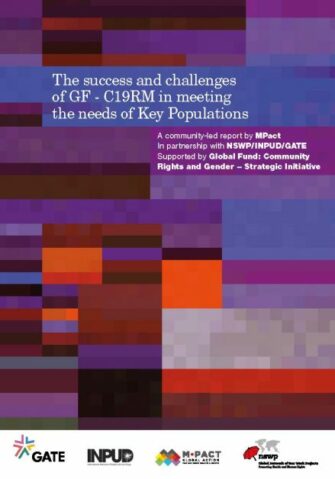A community-led report by MPact, in partnership with NSWP, INPUD and GATE
Supported by the Global Fund: Community Rights and Gender – Strategic Initiative
Effective, meaningful engagement of key populations and inclusion of community priorities and efforts within a country’s Global Fund COVID-19 Response Mechanism (C19RM) is critical to mitigating the impact of COVID-19 on HIV and TB responses.
This Brief aims to illustrate the extent to which key populations were supported to participate in and influence Global Fund (GF) C19RMs within their countries and lessons learned during the process. In particular, the Brief considers the technical assistance (TA) provided to key populations in 2021, highlighting strategic learnings about what worked, what didn’t work and what could be done better in the future to improve key populations’ voices, priorities and engagement in GF C19RM funding proposals, and their strengthened engagement in subsequent implementation at country level.
It shows how key population inclusion and related TA works well in supportive contexts with engaged Country Coordinating Mechanisms (CCMs), capacitated country- level partners, existing strong relationships, lines of communication and partnerships between country, regional and global partners. Conversely, in challenging operating environments, it shows the many barriers to inclusion. However, there are positive examples of key population networks overcoming these challenges, with the support of global key population networks, partners and the GF, highlighting the value of continued, ongoing technical support.






